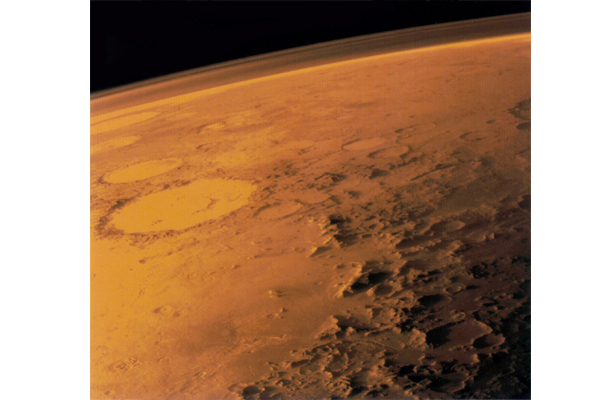
Surface of Mars poses danger to life, tests show
Researchers investigated the behaviour of chemical compounds, called perchlorates, which are found on the surface of the red planet.
They found that, when exposed to UV light whilst in environmental conditions mimicking those on Mars, the chemicals can kill bacteria commonly carried by spacecraft.
Their findings could have implications for potential contamination from robotic and human exploration of Mars.
The study also suggested that the effect of perchlorates can be compounded by two other types of chemicals found on Mars’ surface, iron oxides and hydrogen peroxide.
In experiments in which all three were present, the combination led to a more than 10-fold increase in death of bacterial cells compared with perchlorates alone.
Scientists have speculated on the influence that perchlorates may have on the habitability of the planet, since their discovery there several years ago.
Researchers in the UK Centre for Astrobiology and School of Physics and Astronomy investigated the potential reactivity of perchlorates and their effect on Bacillus subtilis, a bacterium found on spacecraft and common in soils and rocks.
Their experiments showed that when magnesium perchlorate was exposed to UV radiation similar to that on Mars, it became capable of killing bacteria much more effectively than UV light alone.
At concentrations of perchlorate similar to those found on the Martian surface, cells of B. subtilis quickly died.
Although the Martian surface has been suspected for some time to have toxic effects, the latest study suggests that it may be highly damaging to living cells.
This is owing to a toxic mix of oxidants, iron oxides, perchlorates, and UV energy.
Their study, funded by the Science and Technology Facilities Council, was published in Scientific Reports.
Support Our Journalism
We cannot do without you.. your contribution supports unbiased journalism
IBNS is not driven by any ism- not wokeism, not racism, not skewed secularism, not hyper right-wing or left liberal ideals, nor by any hardline religious beliefs or hyper nationalism. We want to serve you good old objective news, as they are. We do not judge or preach. We let people decide for themselves. We only try to present factual and well-sourced news.







